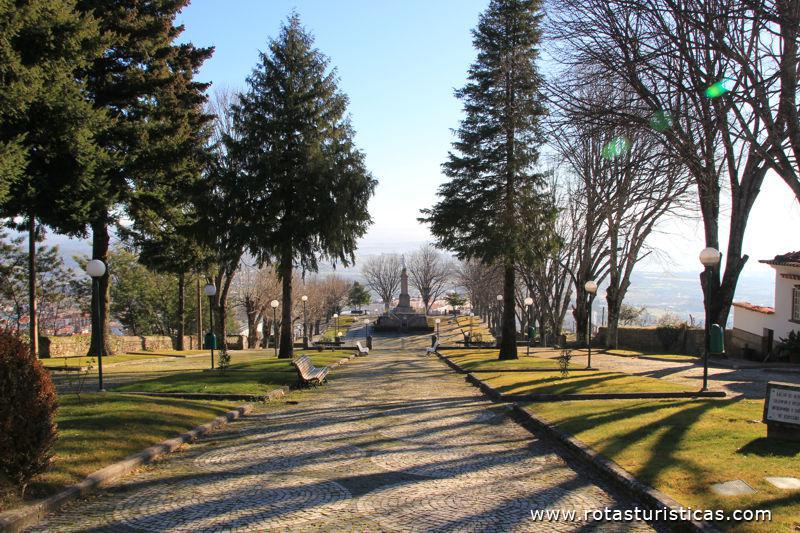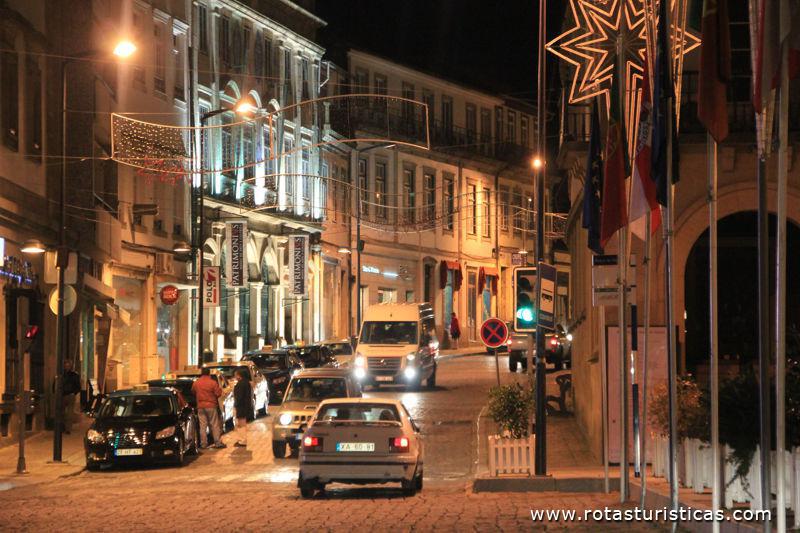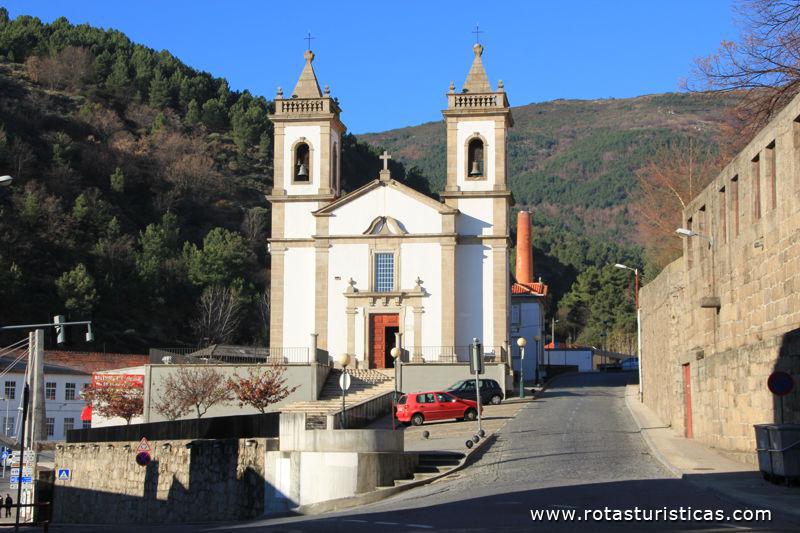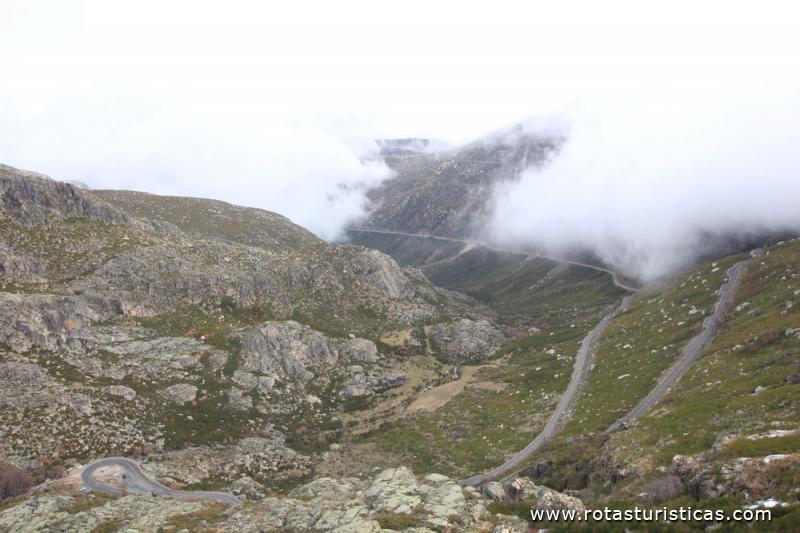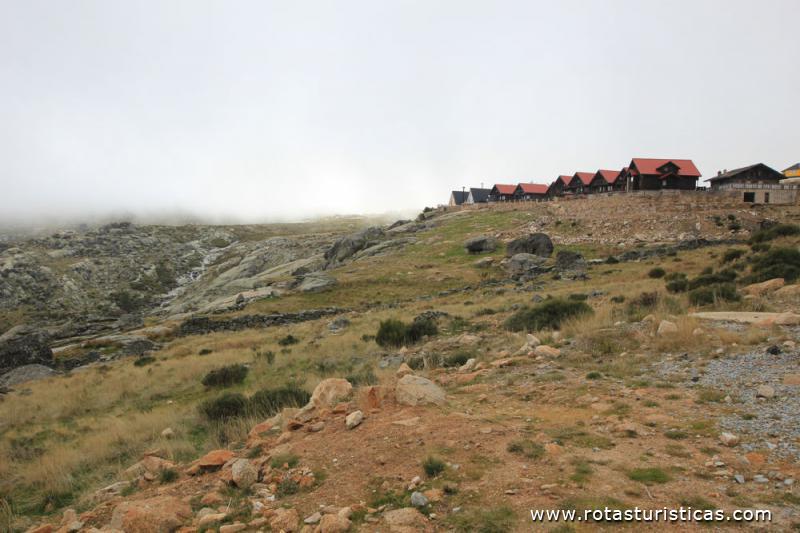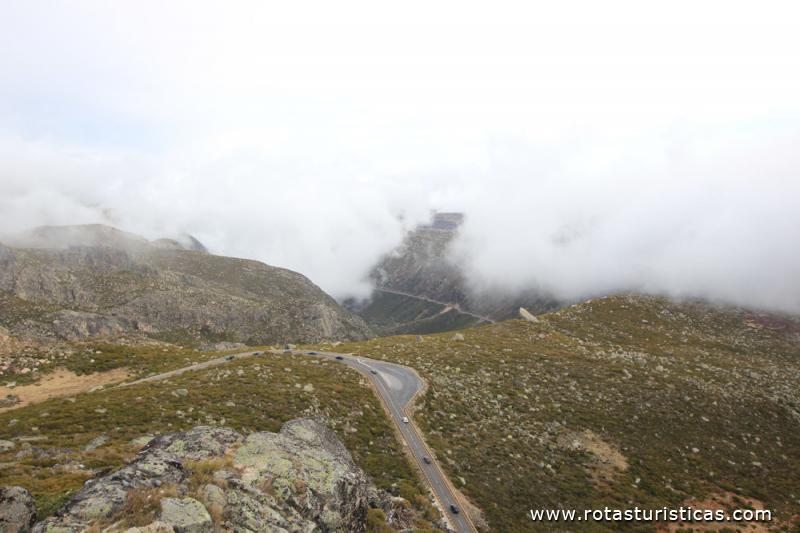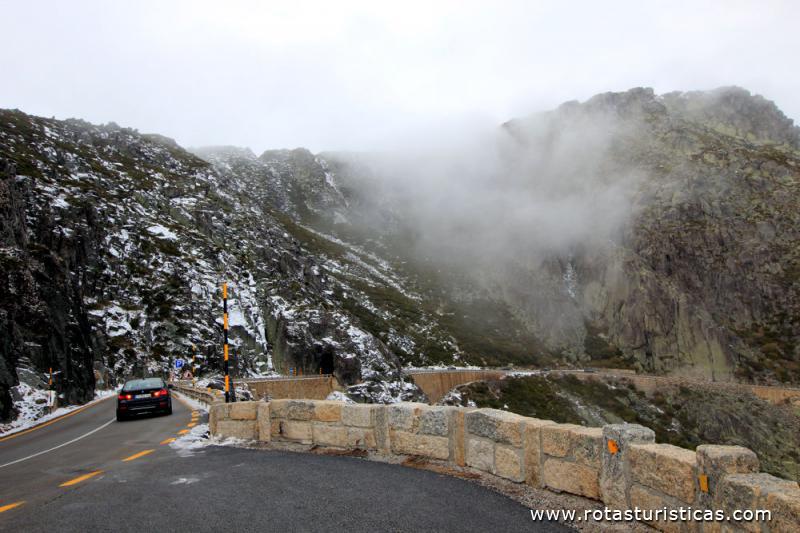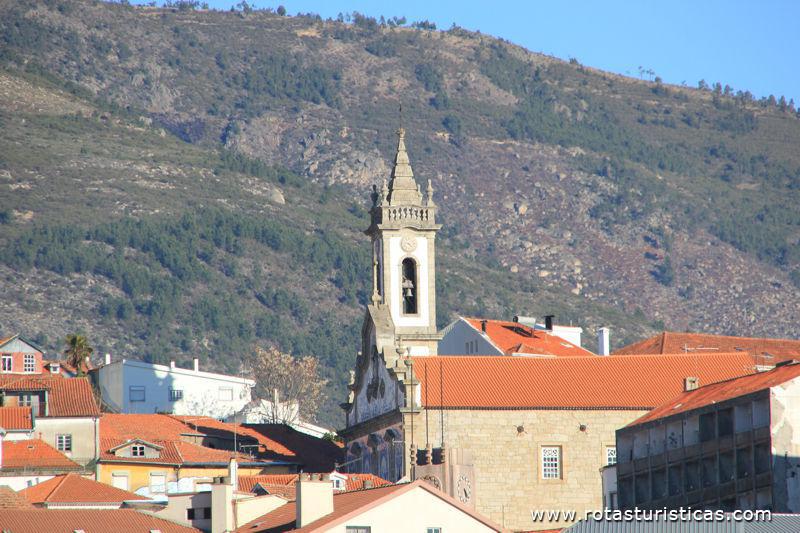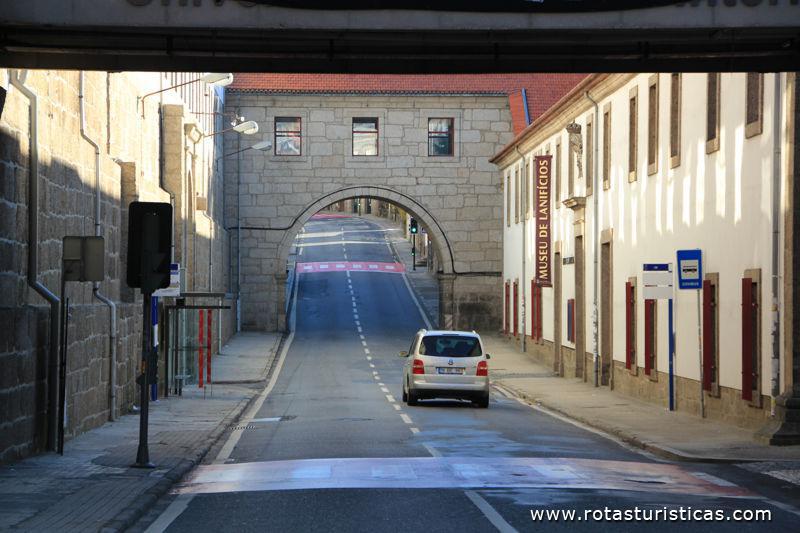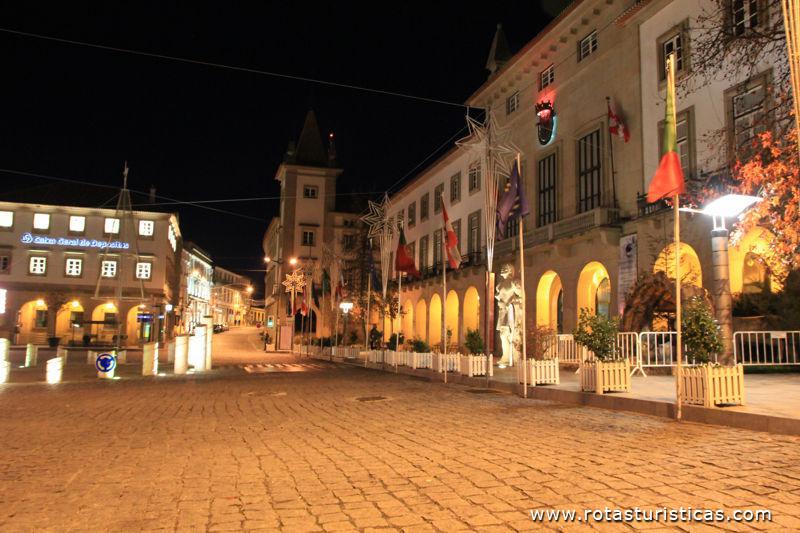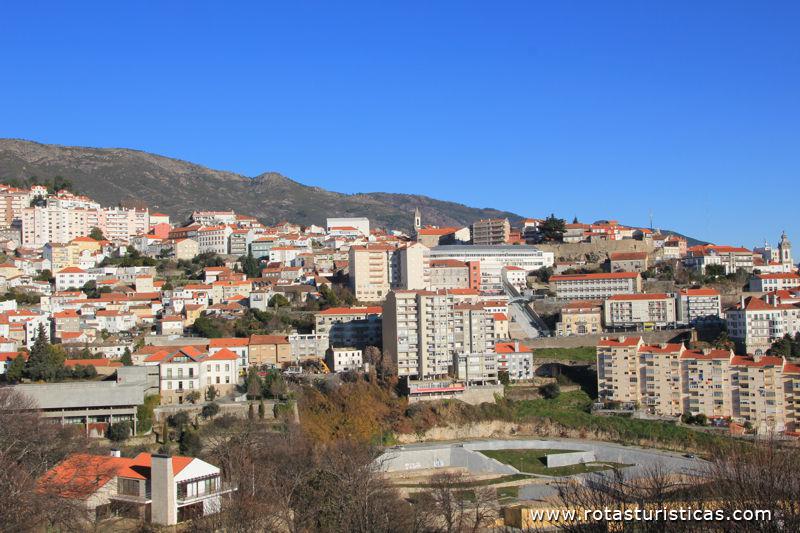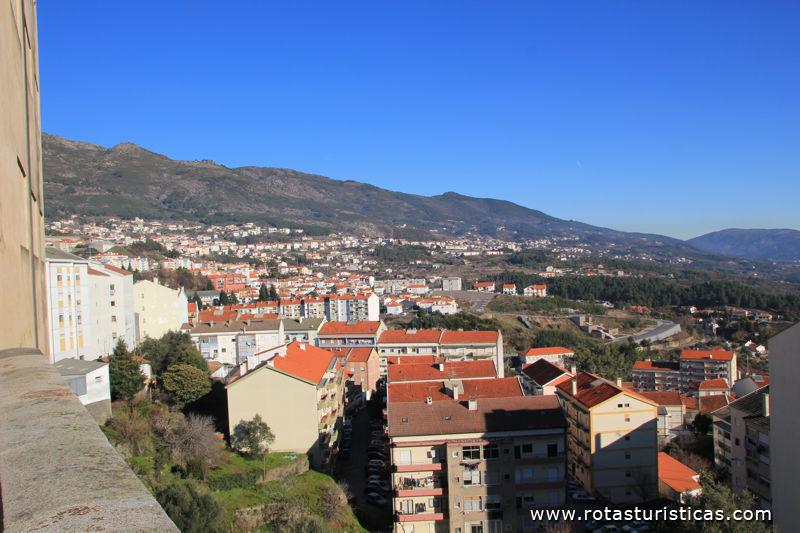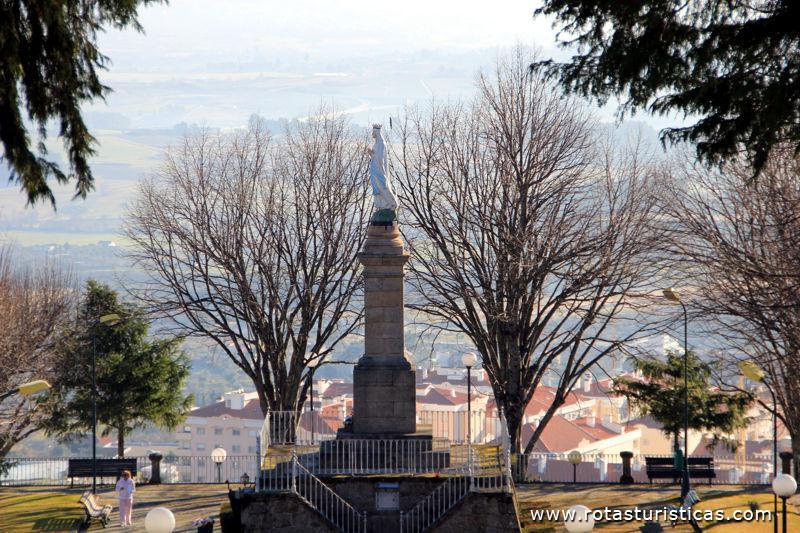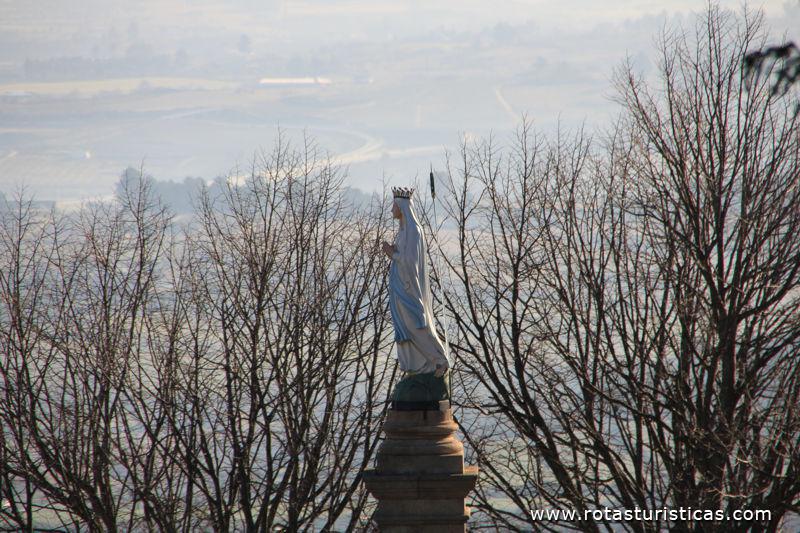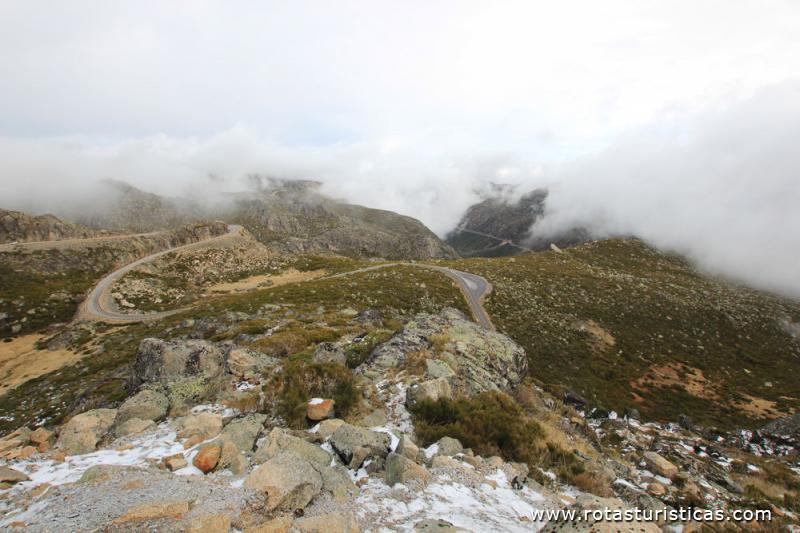Pictures of: Covilhã
Location map
Airports
Hotels and other Accommodation
What to visit
Where to Eat
World Nomads
The Travel Insurance with the largest coverage

The Travel Insurance with the largest coverage

Covilha
Covilhã is a Portuguese city, a gateway to the Serra da Estrela, with about 35,000 inhabitants, whose urban perimeter is formed by five parishes: Covilhã and Canhoso, Teixoso and Sarzedo, Cantar-Galo and Vila do Carvalho, Boidobra and Tortosendo.
It is the seat of a municipality with 555.60 km² of area3 and subdivided into 21 parishes. The municipality is limited to the north by the municipalities of Seia and Manteigas, to the northeast by the Guard, to the east by Belmonte, to the south by the Fundão and to the west by Pampilhosa da Serra and Arganil.
It is the land of the wool industry, of a laborer type, the cradle of discoverers of five hundred, now a city with a public university.
Covilhã is located in the southeast slope of Serra da Estrela and is one of the most important urban centers of the region along with Coimbra, Aveiro, Viseu, Figueira da Foz, Guarda, Castelo Branco and so on. Its urban nucleus extends between 450 and 800 m of altitude.
The highest point in Continental Portugal, Torre (1 993 m), belongs to the parishes of Unhais da Serra (Covilhã), São Pedro (Manteigas), Loriga (Seia) and Alvoco da Serra (Seia) belonging to three municipalities: Covilhã, Manteigas and Seia, 7 but it is about 20 km from the urban center of Covilhã, and Covilhã, therefore, is the closest Portuguese city to the highest point of Continental Portugal.
It is a city of its own characteristics for centuries, combining simultaneously interesting facts of the Portuguese reality.
It is the seat of a municipality with 555.60 km² of area3 and subdivided into 21 parishes. The municipality is limited to the north by the municipalities of Seia and Manteigas, to the northeast by the Guard, to the east by Belmonte, to the south by the Fundão and to the west by Pampilhosa da Serra and Arganil.
It is the land of the wool industry, of a laborer type, the cradle of discoverers of five hundred, now a city with a public university.
Covilhã is located in the southeast slope of Serra da Estrela and is one of the most important urban centers of the region along with Coimbra, Aveiro, Viseu, Figueira da Foz, Guarda, Castelo Branco and so on. Its urban nucleus extends between 450 and 800 m of altitude.
The highest point in Continental Portugal, Torre (1 993 m), belongs to the parishes of Unhais da Serra (Covilhã), São Pedro (Manteigas), Loriga (Seia) and Alvoco da Serra (Seia) belonging to three municipalities: Covilhã, Manteigas and Seia, 7 but it is about 20 km from the urban center of Covilhã, and Covilhã, therefore, is the closest Portuguese city to the highest point of Continental Portugal.
It is a city of its own characteristics for centuries, combining simultaneously interesting facts of the Portuguese reality.
Tourism
Covilhã is located in the Serra da Estrela area - a beautiful mountain in central Portugal. This mountain has the highest point of continental Portugal - about 2,000 m above sea level - and Covilhã is about 20 km from that point, called Torre. Along the winding and narrow road that connects Covilhã to the Tower, you will find several belvederes or belvederes. Some of them are identified with name and altitude, but most of them are just "space" by the road where you can park your car and approach the cliffs.
The views from these places are beautiful. The mountain is big, strong, rocky, deserted ... imposing !!!! The air is fresh and pure.
The Estrela Natural Park begins right next to Covilhã and has within the highest peak of mainland Portugal, often filled with snow during the winter.
The hilly and hilly scenery dotted with small ponds offers places of rare beauty.
The center of the city has some monuments to see and some manor houses. One of the highlights is the Church of Santa Maria Maior. Tucked away in the city center, it has a beautiful nineteenth-century tile facade.
Not far from Hell (the waterfall), enjoy the view from a small viewing area. Below is a small village along the banks of the river Zerere, with the lower slopes of the valley now covered with trees.
The waterfall known as Well of Hell. The walk itself is quite pleasant and the waterfall is also very scenic, where the river Leander flows through a gorge to join the Zezere well below. The water flow was not very spectacular, but the water pool at the foot of the falls is crystal clear.
The views from these places are beautiful. The mountain is big, strong, rocky, deserted ... imposing !!!! The air is fresh and pure.
The Estrela Natural Park begins right next to Covilhã and has within the highest peak of mainland Portugal, often filled with snow during the winter.
The hilly and hilly scenery dotted with small ponds offers places of rare beauty.
The center of the city has some monuments to see and some manor houses. One of the highlights is the Church of Santa Maria Maior. Tucked away in the city center, it has a beautiful nineteenth-century tile facade.
Not far from Hell (the waterfall), enjoy the view from a small viewing area. Below is a small village along the banks of the river Zerere, with the lower slopes of the valley now covered with trees.
The waterfall known as Well of Hell. The walk itself is quite pleasant and the waterfall is also very scenic, where the river Leander flows through a gorge to join the Zezere well below. The water flow was not very spectacular, but the water pool at the foot of the falls is crystal clear.
Gastronomy
The gastronomy of Portugal is very varied and Covilhã is one of the areas with more typical dishes such as Açorda de Bacalhau with Tomato, Pudim de Leite, Beira Soup, Soup from Beira Baixa, Trout à la Moda de Manteigas, Trout Stuffed with Ham , Peixe do Rio, Bacalhau à Lagareiro, Bacalhau with Broa, Bacalhau Count of Guarda, Bacalhau à Assis, Panela in the Oven, Cabrito na Telha, among other delicacies that do not want to stop trying!
Weather
The climate of the municipality is Mediterranean, with precipitation being scarcer in the summer. Summers show high temperatures, while winters have mild temperatures during the day and lower temperatures at night. The cold increases according to altitude, ranging from higher temperatures in the lower parts to negative temperatures and snow occurrences, sometimes abundant, in the higher areas, such as the town of Penhas da Saúde, above 1,500 meters altitude, only 9 km from the Tower. In the urban area of Covilhã, snow rarely appears and generally does not accumulate on the ground. As for the vegetation, there is a predominance of woods, with trees such as oak and holm oak, among others. Among the shrubby vegetation, the carqueja is quite found. The vegetation becomes scarce towards the Tower.
The hottest month is August, with an average temperature of 22.2 ° C, while the coldest month is January, with an average of 6.2 ° C. The average annual temperature of Covilhã is 13.6 C and the average annual rainfall is 1,082 mm.
The hottest month is August, with an average temperature of 22.2 ° C, while the coldest month is January, with an average of 6.2 ° C. The average annual temperature of Covilhã is 13.6 C and the average annual rainfall is 1,082 mm.
Other tourist destinations in:
Portugal
Portugal
Other world tourist destinations
Why to book with BOOK HOTEL MADEIRA
The best prices
Our partnerships with the world´s largest operators offer research on the best market prices.
More options
At Rotas Turisticos you can book the hotel, buy the air ticket, book the transfer from the airport to the hotel and vice versa, book the local excursions, rent the car, take travel insurance and consult the places to visit and where to go.
Holiday Tips & Destinations
Hundreds of holiday destinations with all the options that allow you to easily choose the destination that best suits your dream vacation.
BOOK HOTEL MADEIRA
Links

